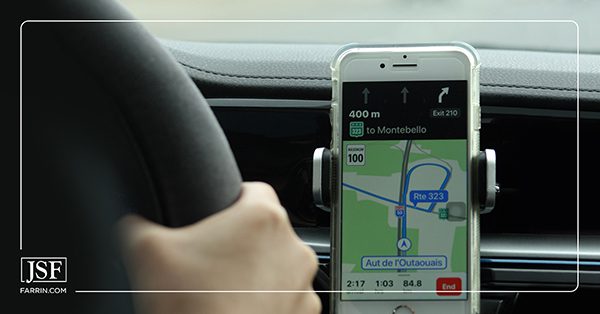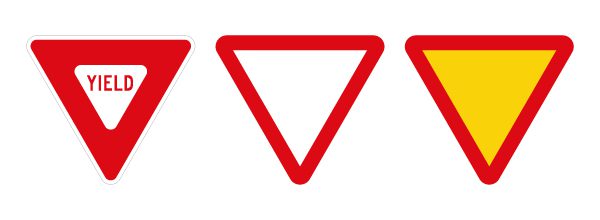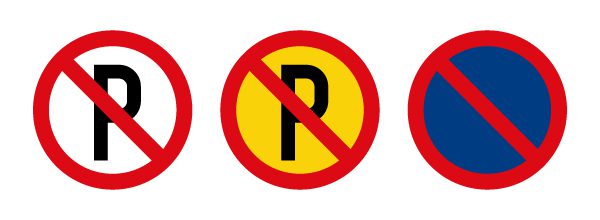International travel powers a lot of daydreams. There are so many fantastic destinations around the world; it would be hard to pick just one. Traveling seems like a foregone conclusion for some, but what might not be obvious is what is involved in driving in a foreign country.
Driving while abroad comes with several challenges and many more rules to deal with. Here are some of the things you may want to consider before you get behind the wheel in another country.
Is My Driver’s License Good in Other Countries?
The eternal question: do you need an international driver’s permit (IDP)? The answer depends on you. Do you want to drive abroad? Is your destination country one that recognizes the IDP?
Your U.S. driver’s license may be valid in other countries, but it does depend on the country and how long you’re staying. In Canada and Mexico, American drivers’ licenses are generally perfectly valid. Many other countries may also recognize a U.S. driver’s license, but only for a limited time.
Before you travel, find out what your destination country will honor.
What European Countries Require an International Driver’s Permit?
Many English-speaking European countries, such as England, Scotland, Ireland, and Northern Ireland, typically recognize U.S. driver’s licenses, and that plus your passport may be all you need. Other European destinations may require an international driver’s permit.
What South American Countries Require an International Driver’s Permit?
It’s a bit more complicated in South America. While more than 150 countries recognize the IDP, some countries in South America, including Uruguay and Brazil, acknowledge only the less common Inter-American Driving Permit (IADP, which Mexico also recognizes). Chances are, your U.S. driver’s license won’t cut it in South America.
What Countries in Asia Require an International Driver’s Permit?
Your U.S. driver’s license isn’t enough in Asia, either, with places like Japan, Thailand, and South Korea requiring an IDP. Other countries, like China, recognize none of the international permits. You will not be allowed to drive or rent a car in China without obtaining a Chinese driver’s license.
What Countries in Africa Require an International Driving Permit?
While some African nations, such as Guinea, require an IDP along with your U.S. license, others may have no such restriction. South Africa, for instance, will generally recognize your U.S. license as long as you have your passport and you’re over 18 years of age. Senegal also generally recognizes a U.S. license (with accompanying passport).
There are many local and national rules you need to know before grabbing the keys in another country. Your best bet before you travel is to do your research.
First, check the U.S. Department of State’s travel page for the country to which you’re traveling. The search bar is on the left side near the top. You’ll find a wealth of information about your destination country and what to watch for, and it may even give you the rules of the road.
For even more information, visit the U.S. Embassy online and find your destination country. Their site will often provide you with enough information to determine exactly what you need to drive legally.
What Is an International Driver’s Permit?
Three international accords govern the IDP: the 1949 Geneva Convention on Road Traffic, the 1926 Paris International Convention, and the 1968 Vienna Convention on Road Traffic. The 1949 Geneva Convention sets out several rules that govern the IDP, but subsequent conventions and amendments have altered the rules.
There are, in reality, three types of IDP based on which convention your destination country signed and the amendments to those conventions. The United States only signed the Geneva Convention.
Quick Facts:
- An international driver’s permit is not valid in the country that issued it – you cannot drive in the U.S. with an international driver’s permit if you are a citizen of the U.S. You would need a U.S. license from your state of residence.
- International driver’s permits are not issued by the government but by authorized associations. In the U.S., for example, it is the American Automobile Association (AAA) or the American Automobile Touring Alliance (AATA). The governing body of the country you’re traveling to recognizes the IDP (assuming they actually do recognize the IDP).
- The IDP is not valid unless accompanied by the driver’s license from your home country. When you travel and plan to drive, have your U.S. license handy, along with your IDP.
What Is the Point of an International Driver’s Permit?
It’s an inexpensive way to get a little more freedom on your trip abroad. You can rent a car and drive yourself instead of being limited to public transportation, taxis, rideshare services, or other methods. It allows for a more flexible itinerary, and some people enjoy the act of driving.
That said, if your destination country does not recognize the IDP, it’s still a form of identification that you may find helpful.
How Do I Get an International Driver’s Permit?
To obtain an international driving permit, check with one of the two authorized issuing organizations: AAA or the AATA.
- You’ll need to be a U.S. citizen or permanent resident with a valid U.S. driver’s license.
- You must be at least 18 years old and have had your license for six months.
- Your license cannot be suspended or revoked.
- You must fill out an application form from AAA (PDF link) or the AATA and follow their instructions.
- You will need two passport-style photos of yourself.
- You will need a signed copy of the front and back of your driver’s license.
- You will need to pay an application fee (about $20 plus shipping costs).
Do I Need International Driving Insurance?
While some U.S. car insurance companies will cover you if you drive to Canada or Mexico, going any further means your insurance likely runs out. And, even if your policy does cover you, it may not meet the requirements where you’re headed.
You can call your car insurance provider and check if they provide international driving insurance. Most won’t cover you. And that’s fine. Why?
Unless you own a car that you park in your destination country – in which case you likely are locally licensed – you’re going to have to rent a car to drive. You can get car insurance straight from the rental car company. Even the credit card you use to pay for the rental may offer insurance. Think of it as temporary car insurance for a temporary car.
Whatever you do, read and understand the policies before you get behind the wheel.
Will My GPS Work Internationally?
Your global positioning system, or GPS, should work wherever you go, though navigation apps and systems sometimes need a connection to mobile data to function. There’s no such thing as an international GPS. They’re all international (hence “global” positioning system). What may not be are the maps used by your device. Some devices have complete maps, and others download them as needed.
If you have a smartphone (or even a smartwatch), chances are you have a GPS that will work internationally. However, be aware that U.S.-based cell coverage providers do not operate in all countries, so know your GPS and navigation app or device’s data requirements, if any. Check with your carrier to see if they offer plans that will cover you where you’re going.
What International Driving or Road Symbols Do I Need to Know?
If you’ve been overseas, you may have seen road signs that were quite different from the ones you’re accustomed to seeing in the U.S. How different depends on the country and on what international treaty they’ve ratified. Some use a combination of various sources.
There are several differences. Unlike the U.S., many countries depend heavily on sign shape, color, and symbols to convey road rules, whereas the U.S. uses a great deal more text-based instruction.
For example, the “yield” sign in America is the “give way” sign in many foreign counties. They share a shape, but there are obvious differences.
The same is true of stop signs. Some countries, like the U.S., use the red octagon with the word “stop” in the middle, though the word “stop” may be in the local language. Other countries use a different sign.
Many foreign countries rely purely on shape, color, and symbols for the signs we’re accustomed to seeing with text on them. For example, which of these signs do you think means “no parking?”
It was a trick question – all of these signs mean “no parking.”
Signage is part of the challenge for a U.S. driver who plans to drive abroad. You can search online for a road sign guide for your specific destination country, as the IDP cannot possibly cover all of them. It is especially crucial if you do not speak the local language, as you’ll have to rely heavily on the symbols, shapes, and colors to ensure you’re following the rules of the road.
Drive Safely Abroad
If you decide you want to hit the road in a foreign country, be prepared, alert, and patient. Make safety your primary concern, whether you’re hitting the Autobahn, the Autostrada, a Motorway, or just cruising around town.
You May Also Be Interested In
Shocking Facts About Hit-And-Run Crashes
Distracted Driving Statistics: Shocking Numbers + Infographic
The Complete Guide to Preparing for and Driving in a Hurricane








